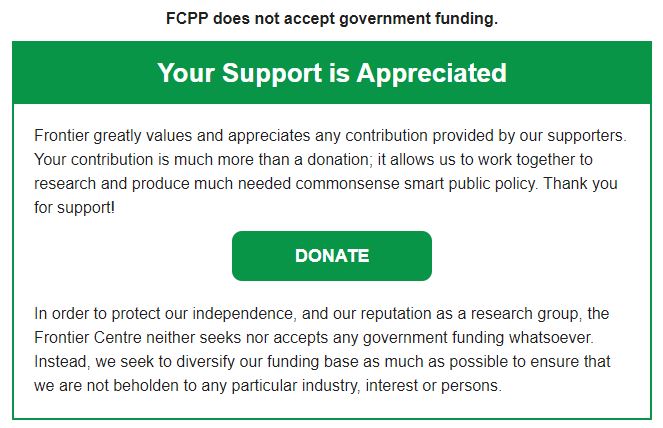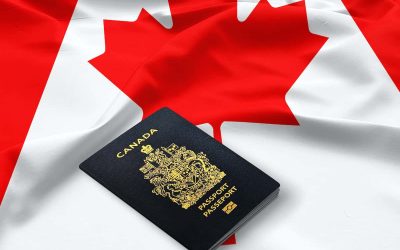While boundaries have traditionally, at least within the context of geographic statehood, represented physical demarcations, they have a much broader significance. Borders are essential declarations of sovereignty, but boundaries are equally social, political, and metaphorical constructs, not just static naturalized categories located between states. Even when boundaries define arbitrary lines between territorial entities they embody deeper symbolic, cultural, historical, and religious meaning that is often contested for legitimacy. Our belief that borders are firm, indisputable, and enduring has at times led to remarkable efforts to establish permanent barriers as statements of sovereignty and against foreign intrusion.
The Great Wall of China, built for defence against the nomadic tribes of Inner Mongolia, extends across more than 6,000 kilometres. The earliest record of the Great Wall dates back to 656 BC and is one of the few conspicuous man-made features recognizable from space.
Built by Emperor Hadrian in AD 122 to defend the northern limits of the Roman Empire, the remains of Hadrian’s Wall can still be seen today. Hadrian’s Wall and its system of ditches, which run approximately eighty-four miles from Wallsend to the salt marshes of the Solway Estuary, marked the limits of civilization, the boundary of the Roman Empire. It formed a physical and ideological barrier between civility and barbarism.1
The Berlin Wall, a barbed wire and concrete structure between East and West Berlin, was erected on August 13, 1961, by the communist government of the German Democratic Republic to prevent mass defections from the East to the West. The Berlin Wall stood until November 9, 1989, and remains one of the most powerful and enduring symbols of the Cold War.
In 2002, the government of Israel approved the construction of a 712-kilometre-long walled structure around the West Bank for the purpose of preventing violent attacks.
According to Elisabeth Vallet, a geography professor at the University of Quebec at Montreal, there were seven border walls or fences in the world at the end of the Second World War, a number that had grown to fifteen by the time the Berlin Wall fell in 1989. By 2018, there were at least seventy-seven walls or fences situated around the world.2 Forty-seven border fences were built in the decade following 9/11, nineteen in Europe and the Middle East following the aftershocks of the Arab spring, and another seven in the Schengen territory.3
On the one extreme, Donald Trump’s wall along the southern border of the United States became for many a long-awaited remedy for the unending drift of undocumented and illegal immigration into the country along with a host of associated criminal activity, and on the other, the object of ridicule and embarrassment. The wall was both literal and symbolic of the policies intended to “Make America Great Again” (MAGA). The wall formed a central tenet of Trump’s platform and became a lightning rod for divisive and partisan politics and an increasingly disparate electorate. 
The symbolic and metaphorical impact of borders is possibly even more powerful than as markers of geographical boundaries. It’s worth noting that Hadrian’s Wall and the Berlin Wall collapsed due to forces within rather than outside. China’s success at walling itself off from the outside world could not be sustained, and in the end, could not resist global participation; the wall having become a metaphor for an inward-looking society. Israel’s wall separating it from the West Bank is relatively new, remains highly controversial, and history has yet to determine its efficacy.
Another way of looking at the perceived effectiveness of barriers is to compare them in preventing the migration of incentivized people across them. Here are some facts to muse upon for those who believe that man-made barriers can effectively prevent the migration of incentivized humans across protected borders.
If preventing human migration is the goal, surely a thousand kilometres of hostile open sea, with all its perils, would be effective, and yet tens of thousands of refugees have breached just such obstacles, risking everything to cross open water in search of a better life.
Following the Vietnamese army’s invasion of Cambodia in 1978, thousands of Cambodians fled their country. The South China Sea did not deter people seeking a better life. An estimated three million people fled by sea or land for other countries across Southeast Asia. Over one million people departed Vietnam aboard unseaworthy makeshift vessels hoping to reach international waters and be rescued there. But first they had to face huge risks—drowning, hunger, dehydration, and attacks by pirates, sexual assaults and even murder. The refugees who survived these perils were subsequently stuck for months in crowded refugee camps in Hong Kong, the Philippines, Malaysia, Indonesia, and Australia while others remained confined to their vessels at sea because no country would allow them to land. Despite the physical and psychological risks, and uncertainty, hundreds of thousands of refugees overcame these barriers.
Even Australia, separated from Asia by thousands of kilometres of open water, has not been immune from those seeking asylum. Thousands of asylum seekers, from as far away as Afghanistan and Iraq, have risked their lives, and the lives of their children and loved ones, to take their less-than-slim chances aboard rickety makeshift rafts to brave the open waters in the hope of making landfall in Australia. And despite some of the harshest policies, the flow of hopeful migrants continues unabated.
In Europe, there is the ongoing saga of the unending flow of refugees crossing the Mediterranean into Southern Europe. Despite terrible odds, and many being exposed to horrific levels of violence, including kidnapping, torture, and extortion, the flow remains unabated.
And there continue to be refugees from Cuba and Haiti, who brave their way across the shark-infested waters that separate them from the east coast of Florida.
This is not to suggest that borders are not essential or that border restrictions should not be enforced. It is to suggest however, that borders and barriers, whether man-made or natural, can at best only provide temporary solutions to the larger challenge of displaced peoples.
Here are some figures from the United Nations High Commission on Refugees (UNHCR) that provide context to the scope of the challenge:4
- According to the UNHCR, 1 percent of the world’s population is displaced.
- 80 percent of the world’s displaced populations are in territories or countries affected by acute food insecurity and malnutrition.
- 40 percent of the world’s displaced people are children.
- 85 percent of the world’s displaced people are hosted in developing countries.
- There are approximately 4.2 million stateless people.
- There are also millions of stateless people who have been denied a nationality and lack access to basic rights such as education, health care, employment, and freedom of movement.
- Among the forcibly displaced, there are 25.9 million refugees, 41.3 million people displaced in their own countries, and 3.5 million asylum-seekers awaiting determination on refugee status.
- More than half of the world’s 25.9 million refugees are under 18.
- An estimated 25 percent of internally displaced peoples are young women, with pregnant women making up another 4 percent.
- One person is forcibly displaced approximately every two seconds.
The challenges faced at the southern border of the United States are not trivial; they are enormous. According to the UNHCR, over five million Venezuelans now live abroad, the vast majority in countries in Latin America and the Caribbean; this has become one of the largest displacement crises in the world.5
The UNHCR reports that between 2014 and 2019, Venezuelans lodged close to eight hundred thousand asylum claims globally—75 percent lodged in 2018 and 2019. Approximately 2.4 million residency permits and stay visas have been granted to Venezuelans in their host countries, allowing them to remain there regularly and to access basic rights and services.6
Growing numbers of men, women, and children continue to leave Venezuela due to the deteriorating political, human rights, and socio-economic conditions. This movement seeks to escape violence, insecurity, and hunger, as well as lack of medicine and essential services; migrants arriving at their destinations are scared, tired, and in dire need of assistance.7 Further, the conditions driving migration northward into the U.S. include extreme adversity.
Human trafficking is ranked as the fastest-growing criminal enterprise in the world, competing with the illicit arms trade for the place of the second-largest criminal industry after drug trafficking.8 This connection between migration and trafficking of human beings is particularly visible in Mexico and its neighbouring countries. The corridor through Mexico is one of the most used mixed migration routes in the world, with the U.S.-Mexico border being the most crossed border worldwide. Annually, hundreds of thousands of irregular migrants pass through Mexico determined to get to the United States. Many of these migrants use smugglers to help them get there. It is not uncommon for these smuggling agreements to evolve into a trafficking situation. In addition, migrants in Mexico run a great risk of being kidnapped and subsequently being trafficked. It also happens that (irregular) migrants travel for jobs, which simply turn out to be exploitative and/or of a different nature (as to the type of work, the salary paid, and the labour conditions) than what was first agreed upon. The overwhelming majority of trafficking victims are migrants in search of an economically better and safer future. Moreover, the socio-demographic characteristics of vulnerable migrants and asylum seekers strongly resemble the profile of the people most vulnerable to human trafficking.
According to the Migration Policy Institute (MPI), Mexicans in the U.S. accounted for 51 percent of the eleven million unauthorized immigrants in 2018.9
To aggravate matters, the UN estimates that some ten- to thirteen million Latin Americans currently live in another country in the region, double the number from 2000.10
According to the U.S. Department of Homeland Security (DHS), 29,916 persons were admitted to the United States as refugees during 2019. The leading countries of nationality for refugees admitted during this period were the Democratic Republic of the Congo (Congo), Myanmar, and Ukraine. An additional 46,508 individuals were granted asylum during 2019. The leading countries of nationality for persons granted asylum were the People’s Republic of China (China), Venezuela, and El Salvador. Approximately 3,300 additional individuals received derivative asylum status while residing in the United States, and approximately 6,300 others were approved for derivative asylum abroad and issued travel documents that allow them to travel to the United States.11 These numbers are, however, relatively small compared to the challenges.
This is a snapshot of the scope of the looming humanitarian crisis that is unlikely to be kept at bay.
The current state of human migrations is not new, and while it ought rightly to be part of ongoing considerations for policy-makers and politics, it has unfortunately become ripe for over-politicization based on public perception that states have lost control of their borders, compounding fears of cultural erosion, and exacerbating anti-immigrant and anti-refugee sentiments.
Anti-immigrant movements frequently object to what they see as foreigners competing for jobs and drawing on the welfare state at the expense of the native-born population, crimes attributed to immigrants, and threats to traditional norms, practices, and to the existing political and economic power structures.
An alternative view of borders and barriers ought also to be considered, however. There are many largely undefended borders, like the one between Canada and the United States, which have not required fences and barriers. On the contrary, there are not only no physical barriers, there are no real geographic barriers preventing hordes of Canadians from fleeing south. This, the longest undefended border, is perhaps the most cheaply guarded border.
The reason is self-evident. People will only leave their prevailing conditions when and if their survival is imperilled, or the conditions under which they live become so unbearable that they are willing to risk leaving for better prospects. That risk calculation is fairly simple; it is based on the probability and degree of suffering versus the probability of success in seeking out better conditions. The degree of challenge, danger, and demonstrated risk that an individual is willing to take are proportionate to the suffering they are experiencing, or the likelihood of experiencing. In other words, the propensity of households to participate in international migration is directly related to the household’s initial relative deprivation.12
The millions of asylum seekers who risked crossing the high seas did so knowing that they might well drown, starve, or worse, lose their entire families. They were willing to pay the ultimate cost, and hundreds of thousands have done exactly that.
There are two solutions to the challenge of human migrations. The first is to create barriers, close borders, and place guards and technology to deter crossings. This choice has significant monetary and moral consequences. The cost of building physical barriers and maintaining them is an ongoing expense and in the long term likely to be less effective and less humanitarian.
The second solution is more complicated and challenging, but it is a long-term solution, unlike the first. It involves attempting to help societies from which people are fleeing to improve their social conditions and to encourage governments to recognize and live up to the social contract they have with their citizens. This second solution has long been available and proven to be the better long-term choice. The problem is that there are two competing views on how to achieve this second solution. The first has been the free market approach, one based on supply and demand, deregulation of government control, and privatization of markets. The second would require governments to undertake land reform and social programs for health, education, and welfare—what free market advocates would too generally label as socialism.
A radical adherence to the free market approach to global economic structures that labels as socialist anything not approaching complete deregulation and privatization, contributes to unintended consequences that do more harm to the future of free markets. In effect, everything that approaches the free market extreme is not always all good, and not everything that moves any distance from that extreme is all bad, or socialist.
There is in fact no way out of the current and impending global humanitarian crisis other than by holding developing and emerging economies responsible for being socially responsive to their citizens’ welfare, and where necessary promoting deregulation and globalization. All foreign aid, trade agreements, and defence agreements should have an element that requires recipients to set goals and standards for the achievement of social programs that improve the conditions of the millions of neglected and desperate citizens who now form the successive waves of refugees. This necessitates a partnership between free market capitalism and developmental socialism.
Few asylum seekers flee the shores of Cambodia and Vietnam today, and far fewer refugees flee Ethiopia and India than in the past. These countries make the risk of leaving greater than the benefits of remaining. It is the same reason that Canadians don’t rush south of the border. There is just too much that this country offers, even if at times the opportunities appear better south of the border.
As Vallet notes:
Fortifying borders or hardening borders doesn’t solve the root problems that lie most of the time at the very origin of migrations. Climate change, insecurity, war, political regimes have led migrants to go long ways to reach a safer or sounder place—via more dangerous routes whether north of the arctic circle or through hostile jungles. Therefore, erecting walls and fortifying borders are no more than Hans Brinker trying to patch a dike with his fingers. Circumventing strategies are much faster than what governments can deal with and the greater risk G7 countries face is an internal radicalization due to the failure of populist discourses and electoral promises. While economies are deeply in need of manpower, and while more immigrants are the key to prosperity, states have to regain full authority over the process, which means changing the dominant discourses and defining positive leadership. Hence, there is clearly a need to assess multilaterally the triggers of future mass migrations (and) address those issues before they reach the G7’s shores, as well as the far-right radicalization inside the G7 before it has an impact on economic determinants.13
In 2019, the top source countries for displaced persons included Syria (6.6 million), Venezuela (3.7 million), Afghanistan (2.7 million), South Sudan (2.2 million), and Myanmar (1.1 million). The top hosting countries included Turkey (3.6 million), Colombia (1.8 million), Pakistan (1.4 million), Uganda (1.4 million), and Germany (1.1 million).14
There is also a phenomenon of reverse migration, to which less attention is generally paid. Immigration as a permanent displacement is not always the case. Many examples and trends indicate that immigrants return to their places of origin. Examination of this phenomenon, once again, points to a cost-benefit analysis to be explored in the next segment on immigration and reverse immigration.
Anil Anand is a research associate with the Frontier Centre for Public Policy.
Photo by Phil Botha on Unsplash.
[show_more more=”SeeEndnotes” less=”Close Endnotes”]
- Claire Nesbitt and Divya Tolia-Kelly, “Hadrian’s Wall: Embodied Archaeologies of the Linear Monument,” Journal of Social Archaeology 9, no. 3 (2009): 368–390.
- Kim Hjelmgaard, “There’s Been an Explosion in Building Border Walls Since World War II,”
- Elisabeth Vallet, “Rethinking Border Walls,” University of Quebec at Montreal, May, 2018, https://www.ulaval.ca/fileadmin/notre_universite/G7-2018/Vallet-Elisabeth.pdf.
- UNHCR, “Figures at a Glance,” https://www.unhcr.org/en-us/figures-at-a-glance.html.
- UNHCR, “Venezuela Situation,” https://www.unhcr.org/venezuela-emergency.html.
- https://data2.unhcr.org/en/situations.
- Ibid.
- United States Department of Justice, “Human Trafficking,” August 10, 2016.
- Emma Israel and Jeanne Batalova, “Mexican Immigrants in the United States,”
- Mac Margolis, “A Refugee Crisis is the Last Thing Latin America Needs,”
- Ryan Baugh, “Refugees and Asylees: 2019,” Annual Flow Report, September 2020, Department of Homeland Security, https://www.dhs.gov/sites/default/files/publications/immigration-statistics/yearbook/2019/refugee_and_asylee_2019.pdf.
- Oded Stark and J. Edward Taylor, “Migration Incentives, Migration Types: The Role of Relative Deprivation,” Economic Journal 101, no. 408 (1991): 1163–1178.
- Vallet, “Rethinking Border Walls,” …
- UNHCR, “Figures at a Glance,”…
[/show_more]



